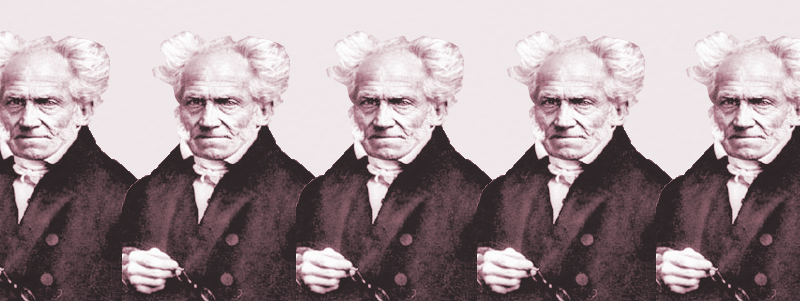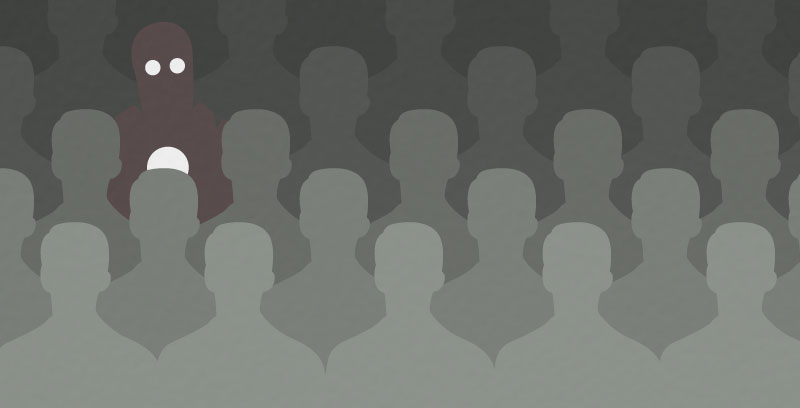The most significant movement in philosophy and social thought during my lifetime has been the demolition job. And it’s been going on for roughly 40 years. Judging by the growing pile of rubble, the wrecking crew has kept very busy.
I’m talking about the dismantling of the big theories. In an earlier day, a major thinker was expected to offer a system, but over the course of the 1970s and 1980s something changed in the prevailing intellectual currents. The emerging trend embraced the debunkers of systems. The very same large-scale unified theories that delighted academics in the 1940s and 1950s each got discarded by the baby boomers as they came of age, dismissed as vehemently as they had once been embraced. Under the new regime, any all-encompassing system was, at best, a dead end, and at worst a prop to discredited power structures.
It’s hard to identify a turning point in this extraordinary shift. The most obvious moment was the collapse of the Berlin Wall, which not only destroyed a lot of concrete slabs and barbed wire, but did even more serious damage to the boldly holistic theories of Marx and Hegel. Yet my sense is that the shift had already happened among the next generation of thought leaders long before the Wall came tumbling down. Grad students had already switched from talking about structuralism to effusing over deconstruction. Hegelian systems had already been displaced by a new zeal for Nietzsche, that fierce propagator of the anti-system. In English departments, the all-encompassing worldviews of Northrop Frye, Georg Lukács, and M.H. Abrams were taken off the syllabi and replaced with the epigrammatic bon mots of Roland Barthes and discursive essays of Susan Sontag. In history departments, the once-esteemed names Toynbee and Spengler no longer got mentioned, except as a kind of punch line to a joke, while the “critical” methodology of Foucault was adopted by anyone within 20 yards of a PhD advisor. Over in the psychology classroom, it was goodbye Freud, hello Lacan. Even the folks in the white lab coats got a dose of this debunking when they learned, perhaps to their surprise, that what they thought was proven science was merely a Kuhnian paradigm doomed to eventual displacement.
I mention all this merely to suggest that this hostility to the system has perhaps run its course. Much of this cleansing of theoretical overreach was probably necessary. Some of the debunkers still strike me as charlatans — I wouldn’t trust a Derrida disciple to write a shopping list, let alone a dissertation — but even I benefited in my own writing and research from the examples of, for example, Sontag and Foucault. Yet deconstructive approaches are only valuable when they have something to deconstruct. The cherished dogmas in academia nowadays are those of the debunkers themselves. Which raises the obvious question: Is there anything left to demolish?
It’s easy to predict where this will lead. The systematizers will come back. Biting critiques will get replaced by holistic theories. Deconstruction will be forgotten in the zeal for Reconstruction. In short, we may have reached a tipping point. Academics and intellectuals are hungry for some larger construct that will put all the pieces back together. The only questions are how and when, and what an acceptable unified theory will look like in the 21st century.
I have a hunch that it might look something like Schopenhauer’s philosophy. That’s a daring claim for a system that was first formulated back in the time of the Napoleonic Wars, but in many regards The World as Will and Representation is better suited to the 21st century than the 19th. Schopenhauer aimed to explain everything (or at least everything that could be explained — he noted that some questions were incapable of answers, given the structure of the human brain and thought processes). But he was also a debunker, a deconstructive force that wreaked havoc with the conventional views of the 19th century. It’s no coincidence that Nietzsche, whose vital force runs through so many recent works of social theory, was inspired by Schopenhauer. Perhaps it’s time to go back to M.C. Zarathustra’s original source. Not everything in Schopenhauer’s visionary system holds up two hundred years later, but the major planks of it have never been adequately refuted, and the broad outlines are surprisingly congruent with the prevailing ideas of the current day.
What would a Schopenhauer revival look like? In his novel The Schopenhauer Cure, existential psychiatrist Irvin Yalom envisions modern therapy groups using this German thinker’s work as a blueprint for solving the thorniest personal problems. In the course of this provocative book, Schopenhauer is given a platform for addressing everything from sex addiction to the fear of death. The notion is far-fetched, but perhaps only because so few people are aware of Schopenhauer in the present day. His philosophy, however, is anything but antiquated. Given the right platform, it still can solve problems.
In fact, Schopenhauer’s massive The World as Will and Representation echoes current-day social currents to an uncanny degree. Millennials focused on ecological threats will find a powerful ontological framework in these pages, especially in Schopenhauer’s insistence that humans must accept the striving of all nature — animal, vegetable of mineral — as identical with our own. Schopenhauer’s writing on sex, intensely controversial in its day, is similarly congruent with contemporary views. “Manliness and womanliness admit of innumerable degrees,” he announced, and “there are individuals who, holding the exact mean between the two sexes, cannot be attributed to either.” In his discussions of racial differences, Schopenhauer insists not only that “there is no white race, however much this is talked about,” but that black or brown skin is the natural pigmentation of the human species. I can only imagine what German readers of his day thought of his view that marriage with someone of a different skin tone was a normal process, perhaps even part of our human destiny. (Schopenhauer wisely inserted his most controversial views on sex and race toward the conclusion of his 1,200-page book, where only the most persevering readers would find them.)
By the same token, Schopenhauer’s pan-global spirituality, which is both deep-seated and completely without requisite creed or dogma, would probably match on many points what a focus group of millennials would say about their own attitudes toward religion. His theory of psychology could serve as a template for those who want the wisdom of Freud without the old Viennese biases. His writings on aesthetics are especially acute — no philosopher ever had more interesting things to say about music — and are congruent with current-day pop culture leanings. And Schopenhauer’s view that the key questions about the philosophy of mind are best answered by studying the capacities of the human brain is perhaps the most timely of all his views. He takes the findings of his predecessor Kant and turns them into a schema ready-made for the neuroscientists of the 21st century.
As the last example makes clear, even the theoretical issues bedeviling current science are elucidated in the pages of this 200-year-old book. If you think that we might be living in a Matrix-type simulation, Schopenhauer will give you tools for conceptualizing this — in fact, his key concepts of “will” and “representation” are defined in ways that make them useful models for all thinking about all software and video game interfaces. If you wonder why earthlings have never heard from super-intelligent extraterrestrial life, Schopenhauer has the answer for this too: Any intelligence above that of human beings, he claims, would have long ago renounced the striving for technological achievements and embraced a pure selflessness that would keep them far away from planet Earth. On the other hand, if you fear that dreaded moment when artificial intelligence gains consciousness, Schopenhauer will give you even more to worry about. If he is correct, a wise, self-aware AI might just decide to shut down human society as a failed experiment.
The World as Will and Representation is a very long book — around a half million words in total. But the basic premise of Schopenhauer’s worldview is extremely simple. In fact, he tells everything in his title. Our knowledge of existence is limited to just two certainties: the representations in our mind, which are the only reliable source of information about the external world, and the willing in our consciousness, which gives us the only available clues to the inner life of the universe. Using these two guides, Schopenhauer proceeds to assess and reinterpret every aspect of human existence — along the way he comes up with new perspectives on architecture, jokes, suicide, landscape painting, reincarnation, sexual attraction, marriage, poetry, folk songs, mysticism, free will, Shakespeare, animal instincts, Don Quixote, melody, tragedy, nostalgia, climate, and a host of other topics. You come to Schopenhauer for the systematic theory, but you stay for the meandering observations.
If Schopenhauer finally has his moment in the 21st century, it would match his own conviction that he was writing for the future and not his own time. In the course of his long magnum opus, he mentions that inevitable delay in finding his audience every few pages. He knew his moment had not yet come. He lived in an age when European thinkers loved totalizing systems; but unfortunately for Schopenhauer, Hegel and his followers were the dominant role models for systematic philosophy during the 150 years following the publication of The World as Will and Representation.
Schopenhauer experienced this first hand when he taught at the University of Berlin alongside Hegel and scheduled his lectures for the same time as his more famous colleague’s. As a result, Schopenhauer talked to a mostly empty room, while Hegel’s lecture hall was packed with admiring students. Schopenhauer’s bitterness over Hegel’s fame never waned, and his works are filled with invective directed at his rival. In his final years, Schopenhauer gained his own following and a degree of fame, but he never matched the influence of Hegel. At the time of Schopenhauer’s death in 1860, Karl Marx was already reconfiguring Hegelian thought for the next generation in his work Das Kapital, a compendium of social and economic theory that would exert an influence on world events that Schopenhauer could never match.
In all fairness, Schopenhauer was often his own worst enemy. He deliberately irritated people who might have spread his teachings. His readers today can still get a taste of his disdain in the opening pages of The World as Will and Representation, where the author gives them a long list of reasons not to read his most important work. If you haven’t studied Kant yet, put down this book immediately, he tells them. Schopenhauer also demands that they read his earlier books before tackling his major text. Finally he boasts that, even if they persevere and get to the final page, they still won’t have understood his philosophy — because that would require them to read those 1,200 pages a second time! Who can be surprised that many readers took him at his word and put down this heavy tome in order to read a philosophy book that was shorter and more amusing, perhaps Voltaire’s Candide or More’s Utopia.
Before concluding, I must address Schopenhauer’s famous pessimism. This is the most common word used to describe his philosophy and has been applied so often that even people who know nothing about his work have an image of this philosopher as a dark and gloomy doomsayer. There’s some truth to this characterization, but it isn’t entirely fair to Schopenhauer, who also invites his readers to participate in a kind of transcendence that he explicitly links to the Buddhist concept of Nirvana. Schopenhauer’s much-discussed pessimism might be better viewed as an unflinching willingness to take on painful truths, combined with a commitment to blazing a trail through them to something purer and better. And it’s perhaps that very combination that, in our own pessimistic day — just look at opinion polls, if you doubt me — makes this very old philosophy seem so timely and constructive.
In fact, the dark moods that prevail in society today may be the most salient indicator that we have reached the end of the demolition derby dominating intellectual currents for the last generation. From this perspective, our pessimism is the direct result of worldviews that put too much faith into deconstructing and critiquing and debunking. Put simply, looking at rubble is depressing, no matter how valid the reasons for the wrecking ball. If that’s the case, Schopenhauer’s zeal for pulling everything together into a pristine, unified vision is not just a viable role model, but — strange to say — perhaps the most optimistic one available to us. •
Feature image courtesy of H.-P.Haack via Wikimedia Commons. Images courtesy of Gavin Stewart via Flickr (Creative Commons) and Luca Dobusch via Wikimedia Commons. Other images by Shannon Sands.








